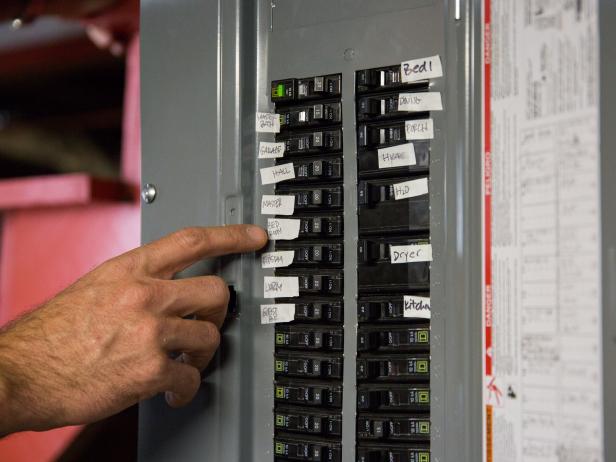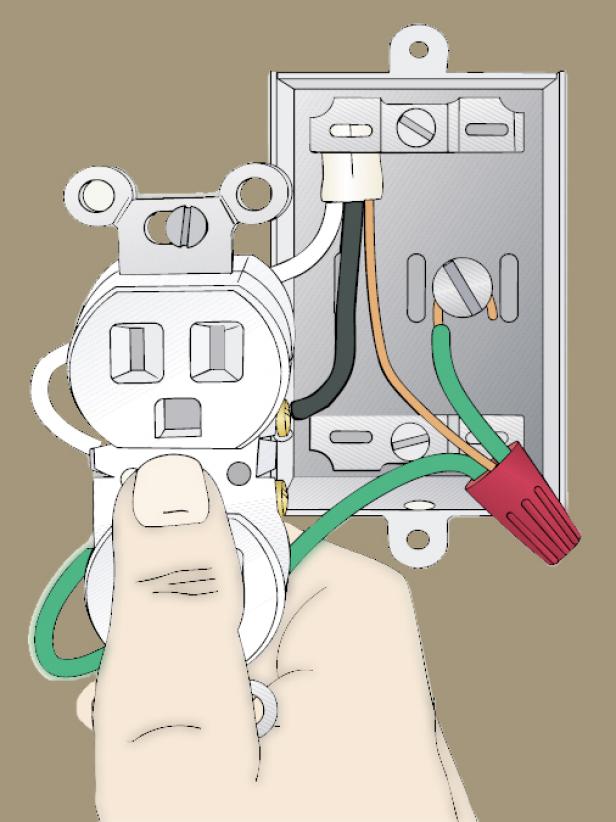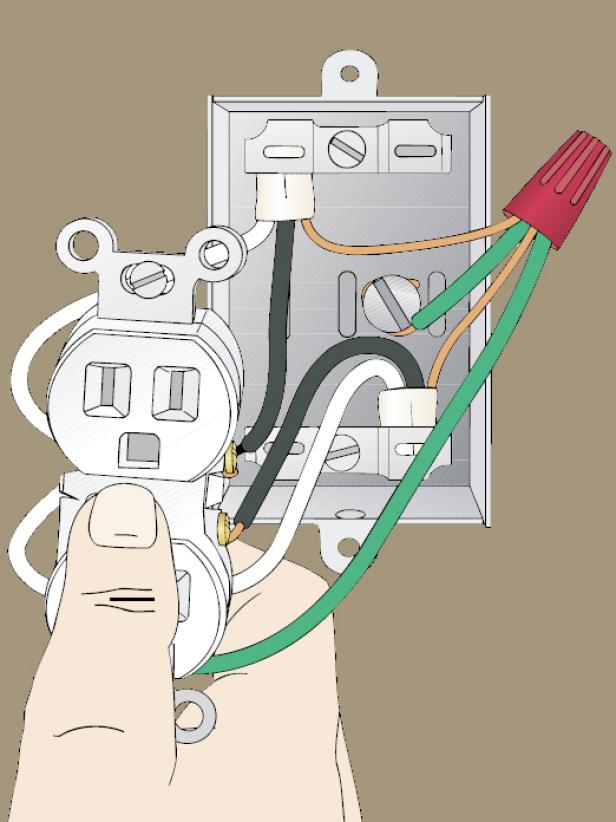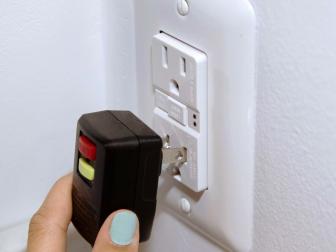How to Identify Basic Electrical Wiring
Whether you’re changing an outlet, light fixture or switch, the first thing you need to know is how a light switch and outlet are wired and what all those different colored wires are for.
Safety First
Before you start any electrical work, turn off the power from the home’s electrical panel to the outlet you will be working on. Place some tape over the switch in the breaker box so no one accidentally flips the breaker. Use a voltage tester or voltage meter to confirm power is disconnected.

Jalynn Baker
What do the Different Color Wires Mean?
Here's a rundown of electrical wires:
The black wire is the "hot" wire, it carries the electricity from the breaker panel into the switch or light source.
The white wire is the "neutral" wire, it takes any unused electricity and current and sends it back to the breaker panel.
The green wire (or it can sometimes be uncolored) wire is the "ground" wire, it will take electricity back to the breaker panel, then outside to a rod that's buried in the ground. This is to prevent the electricity from running through you!
End-of-Run Outlet
When there's only one cable entering an outlet box, it means the outlet is the last fixture on the circuit. Power comes from the service panel along the black (hot) wire through other outlets, switches and light fixtures on the circuit and begins its return to the source through the white (neutral) wire. The black wire attaches to a brass terminal; the white wire, to a silver terminal.

Middle-of-Run Outlet
Two cables entering an outlet box indicate that the outlet is not the last fixture on a circuit. One of the black wires receives power from the service panel; the other sends it on to other loads on the circuit. The white wires allow current passing through the outlet and the other loads on the circuit to return to the panel.

Electrical Safety Rules
- Wear rubber-soled shoes
- Avoid wet floors
- Use nonmetallic ladders
- Use tools with rubber grips
- Check with your local electrical-codes department to make sure you're doing any DIY project properly.
If you’re apprehensive about doing electrical work, have a licensed electrician do your updates or repairs. Licensed electricians will make sure that your home’s electrical system meets all required safety codes.
How to Replace a Standard Outlet With a GFCI Outlet
Ground fault circuit interrupter (GFCI) outlets block electrical power to prevent potentially dangerous shocks — they should be installed in any area where water is present. Changing a standard outlet to a GFCI is a fairly easy and inexpensive project that will help protect you and your family.





































